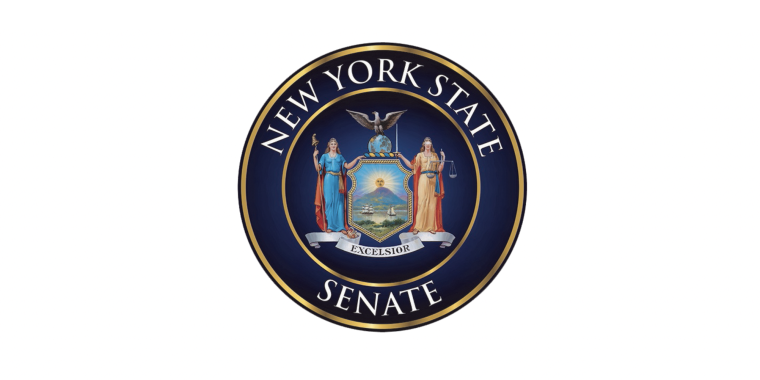
Testimony Before The New York City Rent Guidelines Board Regarding Proposed Rent Increases on June 26, 2002
Liz Krueger
July 12, 2010
My name is Liz Krueger and I represent the 26th Senate District in Manhattan. I am here today to encourage the Board to enact a rent rollback that is consistent with the findings of your own staff. As you know, the operating costs for rent stabilized apartment buildings decreased this year, and any increases in rent would constitute a disregard for your own findings, formulas, and precedent. Below are the key justifications for my position, as well as suggestions about how the Rent Guidelines Board can have a broader role in preserving rent protections in New York City.
RGB Mandate and Jurisdiction
- Free market conditions and the rules of supply and demand do not apply to the NYC rental market. The RGB was established in 1969 to set rent guidelines that counteract the effects of an acute housing shortage. This shortage still exists—according to the 1999 Housing and Vacancy Survey, the vacancy rate is 3.19%. A vacancy rate of less than 5% creates abnormal market conditions. The RGB’s mission is to construct or simulate "normal" or "fair" rent levels in a market driven by chronic scarcity and instability.
- The roles and responsibilities of the RGB are specifically expressed in the NY State Rent Stabilization Law. The Rent Stabilization Law (section 26-510) instructs the RGB to establish annual guidelines following a review of:
(1) the economic condition of the residential real estate industry in NYC including such factors as the prevailing and projected (I) real estate taxes and sewer and water rates, (ii) gross operating maintenance costs (including insurance rates, government fees, cost of fuel and labor costs), (iii) costs and availability of financing (including the effective rates of interest), (iv) over-supply of housing accommodations and over-all vacancy rates, (2) relevant data from the current and projected cost of living indices for the affected area, and (3) such other data as may be made available to it.
Why a Rollback This Year?
- The Price Index of Operating Costs (PIOC) decreased 1.6% this year. This represents the first drop in PIOC in the history of the survey (since 1969, when the RGB was founded).
- Among the reasons for this drop are that the cost of fuel oil decreased by 36% this year, and the cost of utilities dropped by 9.9% (consists primarily of electricity, natural gas, and water and sewer charges).
- Landlords often emphasize that their insurance costs and taxes increased quite significantly over the past year—but the PIOC takes these factors into account, and the PIOC still decreased. Landlords also argue that costs are likely to increase in the next calendar year. The established precedent of the RGB is to use the previous year’s operating cost data- if costs rise this can be addressed by the RGB next year.
- The RGB has historically used a formula, known as the commensurate rent adjustment, to help determine annual rent guidelines. The formula, and all of its variations, indicate that either a rent rollback or a rent freeze is warranted this year. Increasing rents would be a radical departure from methodological precedent that blatantly conflicts with the Boards own findings.
- Landlords have additional methods of increasing rents to account for costs—such as MCIs, vacancy decontrol, hardship increases, and apartment improvements.
- If a rent rollback (or at least freeze) is not implemented this year after 9/11, when the RGB’s own research indicates a rollback is called for and in the midst of a recession then when? Does the RGB want to indicate to landlords that they are guaranteed increases of at least 2 and 4% regardless of the relevant data?
Larger Implications
- NYC is in the midst of an economic recession which began before September 11th. NY State has the highest number of unemployed people of any state in the country—with the highest rate of unemployment in New York City.
- The correlation of RGB increases to loss of affordable housing through factors such as loss of units in rent stabilization is obvious. The loss of affordable housing contributes to homelessness, and our shelter population is at an all time high.
- Impact of RGB decisions on the middle-class. While many people see rent protections as focused on protecting housing for poor New Yorkers, the reality is that rent protections are essential to preserving middle-class housing in New York City as well. For those of us who value the diversity of our city, this quality of rent protection is extremely important. If we truly want the city to maintain its cultural vitality and diversity, we must do all we can to ensure an effective rent protection system.
Other Important Roles for the RGB
- The RGB has made significant contributions to the public understanding of housing issues by producing a wide range of empirical studies. This research role has made RGB a key participant in the ongoing public conversation about the fairness and effectiveness of the rent stabilization system, and I encourage the Board to utilize this resource to the fullest.
- The RGB has the power to adopt resolutions with respect to the legislative design or administration of the rent stabilization laws. For instance, in 1992, the Board adopted a resolution calling upon DHCR to look into possible violations of the Board’s hotel orders.
- I urge the RGB to produce resolutions calling upon DHCR to keep more comprehensive data, to provide complete data to the Board and the public, and to proactively investigate complaints of illegal deregulation of apartments, questionable MCI increases, and landlord harassment charges.
Share this Article or Press Release
Newsroom
Go to NewsroomSenator Krueger's November 2025 Update
November 25, 2025



2025 Midyear Report on Receipts and Disbursements
November 5, 2025
